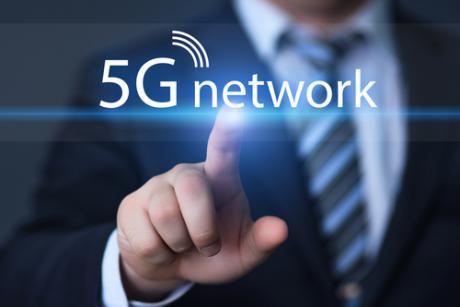Published on the 01/03/2016 | Written by Beverley Head

Once a year the mobilerati gather in Barcelona to sketch the future of communications – this year it was all about Samsung’s new baby and the future offered by 5G – one is really important…
The advent of 5G networks is expected to deliver faster, and lower latency communications across much broader geographies. The major carriers are already gearing up for trials, with Telstra (which has partnered with Ericsson in its 5G programmes) having nominated the 2018 Commonwealth Games in Brisbane as a testbed for the new class of network.
Verizon meanwhile, which has teamed with Ericsson, Intel, Nokia, Samsung and Qualcomm on 5G trials signalled at Barcelona that it planned to have a network operational by 2017 and had already developed test networks offering “multiple gigabits per second”. In a separate initiative Huawei and Deutsche Telekom spoke about their trials of 5G E2E (end to end) network sharing that allows a single physical network to be logically segmented, allowing multiple services over a single physical infrastructure. Intel has 5G trials underway with many companies including LG Electronics on 5G connected car concepts.
Widespread commercial deployment of 5G isn’t tipped much before 2020, with standards expected to start crystallising in 2019. Telecommunications analyst Paul Budde believes it will take until the late 2020s before 5G networks are fully deployed, with 4G/LTE networks “a halfway house on the way to full 5G”.
Forrester analyst Thomas Husson is adamant however that; “5G will have no impact whatsoever for consumers in the next five years. This is for now a standard battle. The history of 3G and 4G networks tells us it will take years before we reach any critical mass after commercial launches at the end of this decade. End of story.”
Once they are commercially available – whenever that may be – 5G networks will support a rich array of applications, particularly in the machine to machine or Internet of Things arenas. Areas expected to benefit rapidly include e-health, e-government, education and smart homes.
The expectation is that 5G networks will be able to handle 1000 fold current data volumes, up to 100 times as many devices, and with much lower demand on device batteries. The end to end latency is expected to be five times lower than is currently possible.
For enterprises it spells a whole new range of possibilities. The same is true for ICT vendors which is why companies from Intel, to Samsung, Verizon, Ericsson, and closer to home, Telstra are all on the 5G bandwagon. New applications leveraging IoT and M2M connectivity will likely spawn a new era of digital transformation.
However, until new generation networks are widely deployed Gartner warns that; “Selecting a wireless network for an IoT device involves balancing many conflicting requirements, such as range, battery life, bandwidth, density, endpoint cost and operational cost. Low-power, short-range networks will dominate wireless IoT connectivity through 2025, far outnumbering connections using wide-area IoT networks.”
Meanwhile; “The long-term goal of a wide-area IoT network is to deliver data rates from hundreds of bits per second (bps) to tens of kilobits per second (kbps) with nationwide coverage, a battery life of up to 10 years, an endpoint hardware cost of around $5, and support for hundreds of thousands of devices connected to a base station or its equivalent. “ Enter 5G.



























